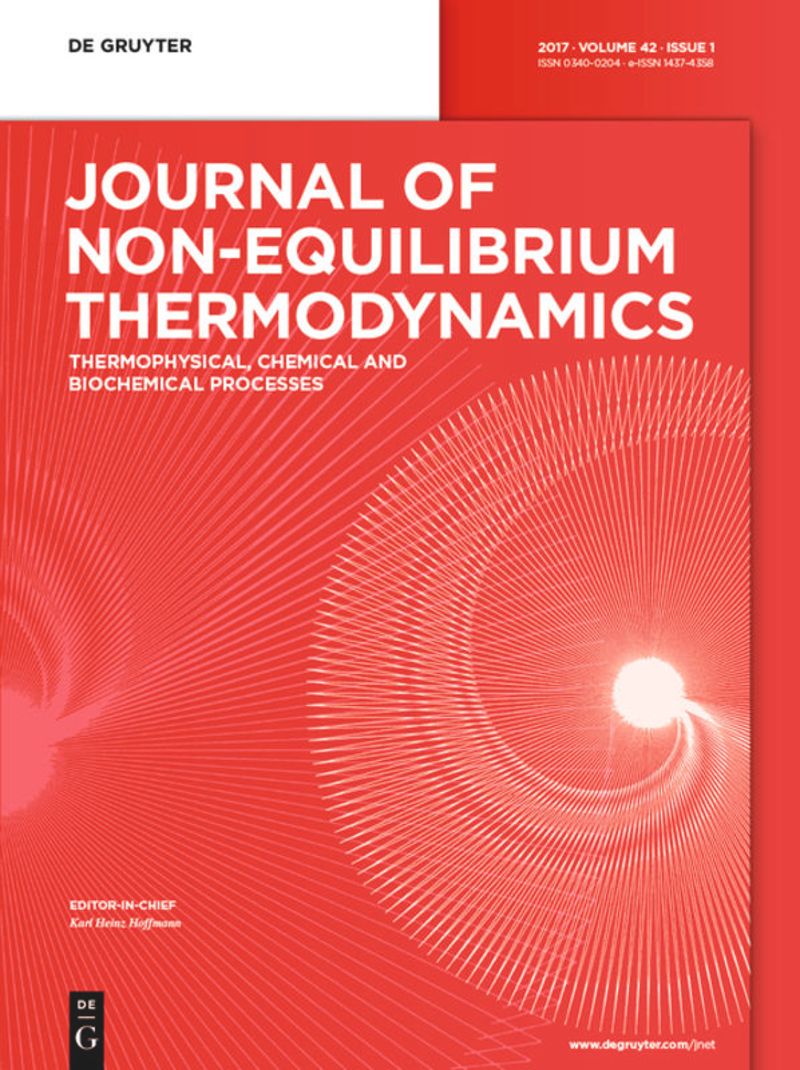Investigation of non-equilibrium separation time on the partitioning of cephalexin in an aqueous two-phase system composed of glucose and acetonitrile
IF 4.2
3区 工程技术
Q1 MECHANICS
引用次数: 0
Abstract
Abstract In order to commercialize aqueous two-phase systems (ATPSs), not only the equilibrium data is essential, but also the knowledge of separation mechanisms, kinetics, settling time, and operational conditions are needed. Mixing duration and settling time are the most critical factors affecting separation and biomolecule partitioning in terms of economic aspects. This research aimed to find the desired conditions for separating cephalexin in an ATPS consisting of acetonitrile, glucose, and water. Firstly, the evolution of the interphase region was observed. Hereafter, to examine the effect of time on the experimental tie-lines and partition coefficient in non-equilibrium states, the settling time was varied from 2 min to 24 h. In addition, centrifugation was applied to help the separation at different time intervals and rotational speeds. The results of tie-lines slope and partitioning coefficients showed that the system approaches equilibrium after 5 h. However, using the centrifuge separation at 4000 rpm improved the separation time to 45 min, reaching 80 % of the actual partition coefficient. It can be concluded that with an acceptable tolerance in the partition coefficient, a remarkably diminished settling time is available for economic productivity in industrial units.非平衡分离时间对头孢氨苄在葡萄糖-乙腈双水相体系中分配的影响
摘要为了使双水相系统(ATPSs)商业化,不仅平衡数据是必不可少的,而且还需要分离机理、动力学、沉降时间和操作条件的知识。从经济角度来看,混合持续时间和沉降时间是影响分离和生物分子分配的最关键因素。本研究旨在寻找在由乙腈、葡萄糖和水组成的ATPS中分离头孢氨苄的理想条件。首先,观察了界面区的演化。此后,为了检验时间对非平衡状态下实验联络线和分配系数的影响,沉降时间从2 最小 至24 h.此外,在不同的时间间隔和转速下应用离心来帮助分离。联络线斜率和分配系数的结果表明,系统在5 h.然而,使用4000的离心机分离 rpm将分离时间提高到45 分钟,达到80 % 实际分配系数。可以得出结论,在分配系数具有可接受的公差的情况下,工业单元的经济生产力可以显著缩短沉降时间。
本文章由计算机程序翻译,如有差异,请以英文原文为准。
求助全文
约1分钟内获得全文
求助全文
来源期刊
CiteScore
9.10
自引率
18.20%
发文量
31
审稿时长
1 months
期刊介绍:
The Journal of Non-Equilibrium Thermodynamics serves as an international publication organ for new ideas, insights and results on non-equilibrium phenomena in science, engineering and related natural systems. The central aim of the journal is to provide a bridge between science and engineering and to promote scientific exchange on a) newly observed non-equilibrium phenomena, b) analytic or numeric modeling for their interpretation, c) vanguard methods to describe non-equilibrium phenomena.
Contributions should – among others – present novel approaches to analyzing, modeling and optimizing processes of engineering relevance such as transport processes of mass, momentum and energy, separation of fluid phases, reproduction of living cells, or energy conversion. The journal is particularly interested in contributions which add to the basic understanding of non-equilibrium phenomena in science and engineering, with systems of interest ranging from the macro- to the nano-level.
The Journal of Non-Equilibrium Thermodynamics has recently expanded its scope to place new emphasis on theoretical and experimental investigations of non-equilibrium phenomena in thermophysical, chemical, biochemical and abstract model systems of engineering relevance. We are therefore pleased to invite submissions which present newly observed non-equilibrium phenomena, analytic or fuzzy models for their interpretation, or new methods for their description.

 求助内容:
求助内容: 应助结果提醒方式:
应助结果提醒方式:


